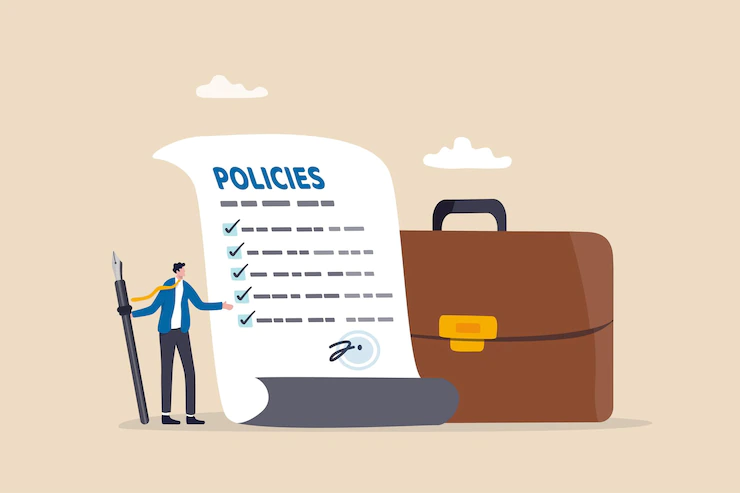QBE, a leading Australian insurance management company, faced challenges in improving its underwriting process and enhancing efficiency across its team. The enterprise soon identified the root cause of this underlying problem- an outdated policy administration process. To resolve this issue, QBE took the path of digital transformation. It deployed robotic process automation (RPA) to its policy administration system. By automating the underwriting process, this digital innovation successfully reduced handoffs and manual steps. What’s more, it facilitated 10,000+ weekly transactions and saved 50,000 hours!
In today’s times, digital transformation has become inevitable across industries. The insurance sector is no different. Major P&C insurance companies are embracing digital transformation to reinvent their core systems, with a special emphasis being paid to policy administration. A recent report by Accenture stated that 86% of insurers wanted to digitize their business models and policy administration for maximum customer satisfaction.
![]()
Interestingly, automation has emerged as a lever of change for reshaping insurance operations. Automating your policy administration process is worth its weight in gold. You can implement business capabilities to stand out in the ever-changing insurance landscape. These may include:
- Speed to market with product
- Enhanced customer service across different channels and
- Efficient processing of all transactional Whether it’s deployed as a stand-alone process or as part of an integrated insurance suite, streamlining policy administration can drive business growth and agility.
Benefits of Automating your Policy Administration Process
Automating policy administration allows you to leverage untapped value from internal business operations by:

Adapting to changes in the insurance environment
To survive this competitive landscape, insurance companies need to launch new products and tap into customer bases. Automating policy administration can help integrate business processes to meet long-term goals. Artificial Intelligence (AI) and Machine Learning (ML) can empower you to develop new products/services or reconfigure the existing ones through predictive analytics.
Nurturing long-term relationships between clients and agents
By optimizing workflows, policy administration enables seamless coordination across different channels, product lines and distributors. Additionally, automating the internal processes allow different departments to access the same information. This makes each department self-reliant, productive and efficient.
Gaining optimum returns from existing investments
An automated policy administration solution can oversee your business investments and check if they are properly being utilized. It minimizes development timelines and overhead expenses. You can also develop personalized solutions that let you achieve your insurance goals within a fixed budget.
How Automating Policy Administration Helps in Policy Life Cycle Management
During the policy administration process, the P&C insurance agents require customers to fill up policy applications, make payments and wait for the underwriter’s review for policy binding.
Phase 1: Quote Generation
According to a study by Formstack, 70% of buyers complete their journey before they contact an insurance agency. This means that by the time customers reach out to an agency, they have already decided on an insurance provider. Customers can demand policies for various purposes. These can range from protecting your business from lawsuits and safe-guarding your building to combat security breaches. The process of generating accurate quotes in real-time gives insurance carriers a strong competitive edge.
The agency’s ability to generate a quote quickly can win more customers. Automation of the quote generation process can expedite policy issuance by:
- Enabling multi-channel requests for quotes: You can receive requests for quotes from different channels like mobile applications, telecalls and customer portals. For email inquiries, the policy administration system auto-generates request work-items. The data is collected in a structured format that gets auto-integrated into the workflows. This process minimizes the mundane task of manual data entry and guarantees speed with accuracy.
- Leveraging mandatory checks and validations: Automated policy administration prevents duplication of quote requests.
- Calculating quotes: On completion of the mandatory checks and validations, the process generates premium calculation rules. Some of the policy administration solutions come with Benefit & Risk Management Services (BRMS). They offer this methodology for defining a series of complex and configurable premium calculation rules.
- Producing quotes and their versions: The policy administration solution registers the quotes and produces a quote number. If the premium is recalculated post-registration, it updates versions for reference. These versions are auto-indexed to the pre-existing quote number based on a defined syntax.
- Identifying requirements for additional underwriting: Some policy administration procedures come with a rule-based identification component. This component states underwriting requirements for additional, optional or free coverages.
- Utilizing pre-defined templates: You can use various pre-defined templates for creating quote generation documents. They can be auto-filtered based on requests, locations and products. What’s more, you can keep a record of quotes for future references and track their status during the policy issuance cycle.
Phase 2: Completion of Application
At this stage, the user needs to finish a detailed application to bind to an insurance policy. The insurance company can include a list of underwriting questions in the applications. For instance, if certain assets don’t fall under insurance coverages, the agents can either decline your application or flag it off for further scrutiny.

Binding to a policy is a repetitive task. This is why enabling intelligent automation technologies like Robotic Process Automation (RPA) is essential as it
- Tracks the insurer’s work during the application procedure. If one of the applications tends to violate the guidelines, you can stop the agent from binding to a policy.
- Enables underwriting beyond the initial quotation process. It also helps to consolidate third-party data into the system, such as insurance claims on a user’s property in the past.
- Checks whether the submitted applications adhere to the prescribed quality and standards.
- Triggers an underwriting review for non-insurable parties.
Phase 3: Generation of a New Business Packet
Sometimes, a policy can be bound or investigated by an underwriter. After the application is submitted, the insurance company carries out its own set of inspections. It can hire a claims adjuster to go over the property with a fine comb. The adjuster has to then comply with due diligence measures to either issue the policy or repeal it.
Once the review is done, the policy holder receives a new business packet. The policy administration system connects the agency with different vendors for generating and sending the right documents. The paperwork is then consolidated into a new business packet which is sent to the insured either through post or email.
 Automation can ease this process by
Automation can ease this process by
- Facilitating secure payment methods that comply with PCI regulations. Many insurance providers collaborate with PCI compliance companies for a safe payment process.
- Managing high-volume mailing lists through distribution centers and conveyers.
- Authorizing mail outsourcing that saves time and reduces cost.
- Ensuring that the documents are mailed to the insured within the assigned time frames and compliant with the law.
Eliminate Redundancy and Ensure Efficiency- Transform your Policy Administration Process with Exdion
Legacy policy administration systems fail to adapt to market changes, streamline customer life cycle management and align with business goals. Exdion can transform your policy administration process by increasing productivity, preventing fragmentation, reducing dependencies on shadow IT and manual processes and encouraging the rekeying of data. We have three key services that will help modernize your policy life-cycle management for better customer experience and a competitive advantage:
Quote Compare: Automates the data collection processes for insurance policy submissions from different agencies. Quote Compare can improve the speed and accuracy of examining quotes from different insurers. You can identify accurate coverage and premium pricing for risks to meet the specific needs of customers.
Policy Check: Reduces errors and omissions (E&O), customer attrition rates and system inefficiencies through an AI-enabled review policy system.
Renewals: Optimizes the renewal process with dynamic forms and helps you achieve 52% higher operational efficiency.
Let Exdion help you transform your policy administration process through automation. Get in touch with us to find out how.
